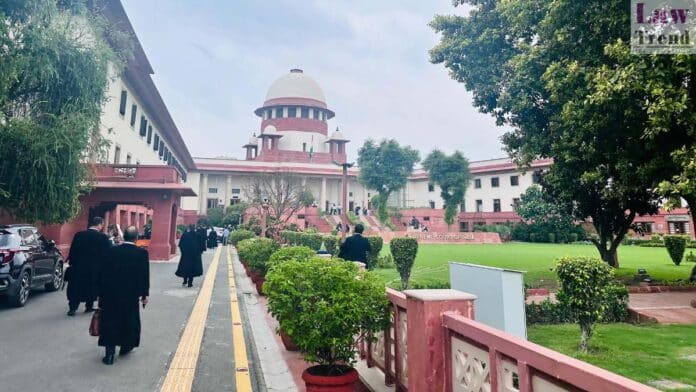The Supreme Court of India, in a judgment delivered by Justice Sudhanshu Dhulia and Justice K. Vinod Chandran, dismissed an appeal filed by Mrs. Varshatai Sanjay Bagade challenging the use of Urdu on the signboard of the Patur Municipal Council building in Akola district, Maharashtra. The Court held that the Maharashtra Local Authorities (Official Languages) Act, 2022 does not prohibit the use of an additional language alongside Marathi. Affirming the Bombay High Court’s decision, the Court observed that both Urdu and Marathi are included in the Eighth Schedule of the Constitution and therefore enjoy equal constitutional recognition.
Background
The appellant, Mrs. Varshatai Sanjay Bagade, a former member of the Municipal Council, objected to the inclusion of Urdu on the signboard of the Municipal Council building. The board displayed the Council’s name in Marathi, with Urdu written below it. The Council rejected her objection through a resolution dated 14.02.2020, noting the long-standing use of Urdu since 1956 and the linguistic preferences of a significant portion of the local population.
Unconvinced, the appellant filed an application under Section 308 of the Maharashtra Municipal Council, Nagar Panchayats and Industrial Township Act, 1965. The Collector allowed her application, directing exclusive use of Marathi. However, this order was reversed by the Divisional Commissioner, prompting the appellant to approach the Bombay High Court, Nagpur Bench, which dismissed her writ petition.
Proceedings Before the Supreme Court
The appellant challenged the High Court’s order in SLP (C) Diary No. 24812 of 2024, asserting that under the 2022 Act, Marathi alone must be used for official purposes and signage. During the pendency of the SLP, the 2022 Act came into force, mandating Marathi as the official language for local authorities.
However, the Supreme Court, after examining the Act and the facts, held that while Marathi must be used for official purposes, there is no legal prohibition against using additional languages for signage. The Bench emphasized that language is a tool of communication and should not become a source of division.
Key Observations
The Court made several notable constitutional and cultural observations:
“Language is not religion. Language does not even represent religion. Language belongs to a community, to a region, to people; and not to a religion.”
It acknowledged Urdu’s rich cultural and linguistic heritage and its recognition under the Eighth Schedule of the Constitution alongside Marathi.
“Urdu was the sixth most spoken scheduled language of India according to the 2001 Census… It is spoken by at least a part of the population in all States and Union Territories, except perhaps in our north-eastern States.”
The Court also traced the historical connection between Hindi and Urdu, referencing constituent assembly debates, the writings of Jawaharlal Nehru and Mahatma Gandhi, and the linguistic scholarship of Gyan Chand Jain, Ram Vilas Sharma, and Amrit Rai. It reiterated that linguistic diversity should be celebrated, not opposed.
Final Decision
Concluding that the display of an additional language does not violate the provisions of the Maharashtra Local Authorities (Official Languages) Act, 2022, the Supreme Court upheld the Bombay High Court’s order and dismissed the appeal. The Bench stated:
“There is no prohibition on the use of Urdu under the 2022 Act or in any provision of law. The entire case of the appellant to our mind is based on a misconception of law.”
Citation: Varshatai Sanjay Bagade vs State of Maharashtra & Ors., Civil Appeal of 2025 (Arising out of SLP (C) Diary No. 24812 of 2024), decided on 15 April 2025 by Justices Sudhanshu Dhulia and K. Vinod Chandran




